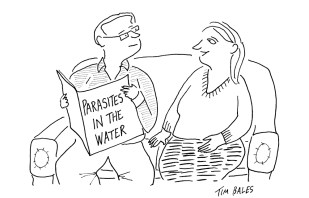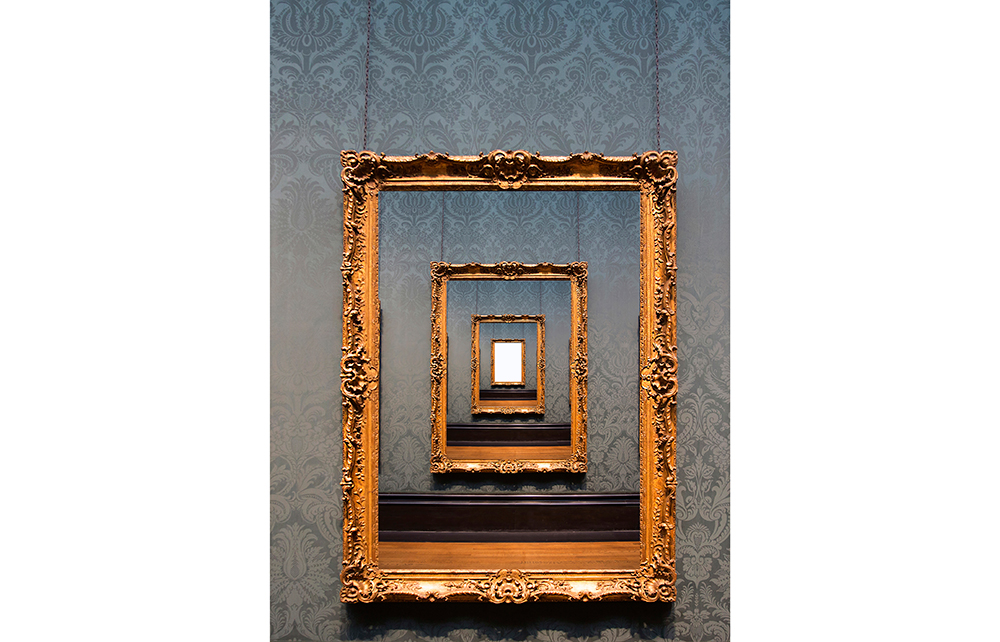When she first starts working as a security guard at the Guggenheim Museum in New York, Bianca Bosker is so bored that she prays someone will touch the art. ‘Do it, I urged silently from my spot by the wall. Do it so I can tell you not to.’ She’s to stand for hours on end, staring into space, reporting anything that could pose a threat. On the first day she radios her supervisors to alert them to a stray leaf: ‘Not exactly a suspicious package, but I needed something to interrupt the tedium.’
Wheedling your way into a self-contained world about which you know next to nothing is no mean feat
The job is one of several Bosker picks up in her quest to understand why art matters. An aspiring artist turned journalist, she’d hoped to become ‘an art appreciator, if not an art maker’ until she moved to New York and swiftly became overwhelmed by everything she didn’t know – ‘the people, the periods, the -isms’. She felt so uninformed and out of place that she considered giving up going to galleries altogether; only she couldn’t shake the sense that she was missing out, because of the obsessive devotion the art she was seeing inspired in others. ‘It was thrilling. Or maybe it was bullshit? Either way, my life looked drained of colour by comparison.’ So, she set out to discover the truth by handing herself over to artists, gallerists, curators, collectors – the experts and the fanatics.
Wheedling your way into a self-contained world about which you know next to nothing is no mean feat, but Bosker has past experience. Just as Get the Picture takes readers inside ‘the throbbing jumble of genius, money, and love’ that is the contemporary art world, her Cork Dork (2017) popped the cork on the sommelier industry and wine snobs. Which means she has a format – total immersion – and plenty of practice at bluffing her way into exclusive afterparties and jobs she isn’t qualified for.
To start, a couple of gallery gigs: the first at a small space in Brooklyn, the second on the Lower East Side. She learns the lingo – pieces are placed (not sold) to collectors (not buyers), who enquire about a work they hope to acquire – and the basics when it comes to gallery models. She gets to grips with the geography of Manhattan, and the fact that, in general, ‘the further an artist’s work travels up the island… the more ensconced its place in art history’. There are brief forays into key periods and figures: ‘Duchamp is so influential that there may be a law requiring me to mention him.’ She attends art fairs – ‘either a necessary evil or just evil’ – and to her surprise comes away exhilarated.
After brushing up on the rituals of presenting and placing art, Bosker craves a glimpse of the creative process, which she gets working as a studio assistant to the up-and-coming artist Julie Curtiss. As well as scheduling DHL pickups and responding to emails, she watches Curtiss at work and learns to look at art like a maker. Having previously been hindered by the idea that you can’t appreciate art without knowing the context, she finds being around someone whose response to a work is ‘intuitive, effortless, as innate as taking a gulp of water’ to be both a relief and a revelation.
It’s easy to see how Bosker managed to get her foot in the door (often with tape recorder in hand). She comes across as relentlessly curious, plucky and an extremely hard worker. Her tone is pleasantly chatty and humorous, though I could have done without the chummy asides: ‘I know I’m not supposed to admit this…’ and ‘between you and me…’ and ‘I hear you….’ I found myself wishing she’d devoted more pages to the art and less to the glitz and glamour and gossip and jealousies surrounding it. Then again, getting to the stage where you’re comfortable sitting with art free from distractions can take time, as her experience shows.

What she realises once she does get there is, as she points out, painfully obvious – that ‘the more time we spend looking at an artwork, the better we understand it’; that there’s no fixed way of viewing, and we can trust our own observations. Back at the Guggenheim, one of her favourite things is hearing what other people see in a work: ‘Their responses moved me way more than anything I read in the wall labels.’ A Brancusi sculpture begins to feel to her ‘more like a companion than an object’. She finds works she can fall in and out of love with. ‘Art,’ she writes, ‘knocks us off our well-worn pathways. Other things can do that, too,’ (a bottle of wine, for example), ‘but art… is arguably designed specifically for that purpose’.







Comments